Going up to the Truong Son mountain range, seeing and touching the national border markers is the dream of many people. During a business trip to the border, we climbed to the top of Truong Son mountain range to feel the sacredness and pride of being able to see the Fatherland from the border.
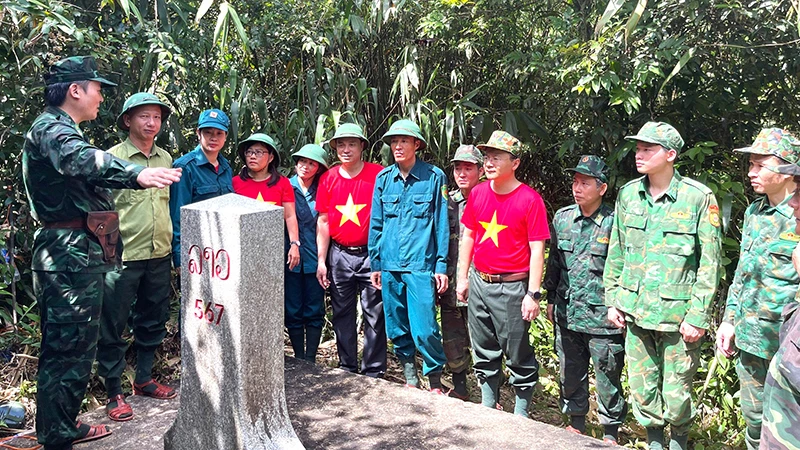 |
Members of the inspection delegation of Quang Binh province listened to the representative of the commander of Lang Ho Border Post introduce boundary marker number 567.
On the Vietnam-Laos border in Quang Binh province, there are dozens of border markers, but there are two that can be easily seen, one is located on National Highway 12A in the Cha Lo International Border Gate area, Minh Hoa district and the other is at Ca Roong-Nong Ma Border Gate at the end of Highway 20 Quyet Thang in Bo Trach district. Most of the border markers are located in extremely dangerous locations on the majestic Truong Son mountain range, and the construction and protection of border markers is very difficult. We have heard from border guards that each time they patrol a border marker, it takes a lot of time, sometimes several days with packed meals and salt. Therefore, when we heard an officer from the Department of Foreign Affairs of Quang Binh province call and ask us to arrange to join the provincial working group to inspect the border marker in the field, we were very happy. He also advised that the road to the border marker is very difficult, so we need to spend a few days practicing to make our legs flexible for the journey through the forest, over passes, and uphill in the middle of the Truong Son mountain range. At 5 a.m. on a midsummer day in 2023, our group departed from Dong Hoi city to Chut Mut village, Lam Thuy commune, Le Thuy district to conduct a field inspection of border markers 567 and 568 on the border between Quang Binh province and Savannakhet province (Laos). Chut Mut, a remote village as its name suggests. Early in the morning, the small village on the Vietnam-Laos border was already desolate in the southwest wind, signaling a hot and humid day. Lieutenant Colonel Hoang Trong Trinh, Deputy Head of Lang Ho Border Guard Station, a member of the working group, instructed us on the skills and equipment needed to go into the forest, especially when patrolling the border. According to Trinh, the border markers on the Quang Binh border are usually located on the highest mountain peaks in the Truong Son range. Therefore, most of the patrol route at the border markers has to be continuously uphill and downhill, without flat sections in ravines, streams or valleys. To conquer the entire journey, the traveler must know how to conserve energy and distribute it appropriately to ensure endurance. Hearing that, many people in the group, especially the female members, were a bit hesitant, but because of responsibility and excitement and experience, everyone eagerly set off even though they knew that the journey ahead was not easy. From Chut Mut village, we began our journey to visit national border marker number 567 located at an altitude of nearly 1,000m above sea level. The first long slope we had to overcome was named by the border guards as Nhap slope, which also means testing strength. Yes, just "practicing" but many people started to breathe out of their ears, because most of them were not familiar with the forest path or rarely went to the forest, climbing high slopes. After more than an hour, our group had overcome Nhap slope, reaching Chut Mut stream with cool water flowing from the deep Truong Son valley. Lieutenant Colonel Hoang Trong Trinh said that this location is where the unit's officers and soldiers often rest when patrolling the border. He also suggested that anyone in the group who feels exhausted should stop here, because the next section is the most difficult with a steep and seemingly endless slope. It took the border guards three hours to get over this steep slope, especially if it rains. While breathing and laughing, no one in the group wanted to stay. The women from the Foreign Affairs Department were also determined to reach the national border marker 567. Someone suggested that if they could not go any further, they should ask the border guards to support them and help them up. Passing Nhap slope, the road was both steep and dense with trees. Lieutenant Colonel Hoang Trong Trinh ordered the soldiers in the lead to use knives and machetes to clear the path and use red paint to mark the path. As we walked, the soldiers supported and helped us to cross dangerous roads and avoid the leeches that were following us. The jokes of the border guards and the members of the working group made everyone in the group laugh, helping to dispel the fatigue. However, the journey was still long, the slope ahead was still steep. A girl in the group asked: "Are we almost at the border marker, Mr. Trinh?" Lieutenant Colonel Trinh did not answer directly but encouraged: "Once we get over the mountain in front of us, we will be there." But the mountain was passed but the destination was still not visible. "About 30 more minutes to get there, keep going, brothers and sisters" - were still the words of encouragement from the border officer who had experienced the wind and rain of the border region. As for us, we were panting up the slope to touch the national border marker that was fading away in the sea of clouds. And then, after more than four hours of continuous climbing, national border marker 567 appeared in the middle of the sky and land of the Fatherland's border. On a fairly flat piece of land of about 10 square meters, surrounded by bamboo trees with lush branches and leaves, the national border marker is made of granite, the front of the marker is engraved with the name of the country, the marker number and the year of manufacture; the back is engraved with the name of Laos. Although 13 years have passed since its construction, in the rain and sun of Truong Son, the border marker is still bright, clean, clearly written and especially the granite has been polished with the color of time. We all burst into happiness because we have overcome the difficult stages that the members of the delegation have never experienced. Touching the national border marker, at this moment, all the hardships and fatigue seem to disappear, in us there is a surge of pride and indescribable emotion. Perhaps, never before have we felt so clearly the sacred meaning of the two words "Fatherland" that generations of fathers and brothers have fought steadfastly, heroically sacrificed to protect the sovereignty and territorial integrity like at this moment. Ms. Nguyen Thi Thu Huong, an officer of the Department of Foreign Affairs of Quang Binh province, was moved: “I overcame my fear when I saw the leeches and used 200% of my strength to climb the steep slopes to get here, in the sacred land of Truong Son. I am so proud!”. Vice Chairman of the People's Committee of Le Thuy district, Nguyen Huu Han, shared: “This is the first time I have made a journey to the national border marker on the top of Truong Son. Only when we get to this place, can we understand the difficulties and hardships of the border guards who are patrolling and guarding day and night to keep peace for every inch of our homeland, of our Fatherland, and to keep the national border marker intact”. After a moment of emotional excitement, each member of the delegation took a hand to clean the marker, clear the grass and trees around the marker area, and recheck the information written on the marker to ensure that the marker is clearly recognizable on the border. The afternoon began to fall, we said goodbye to the sovereignty landmark and began our journey down the mountain. If the way up was difficult, the way down was even more difficult. Because at this time, all the body weight was concentrated on the legs, and if we were not careful, it was easy to sprain or bend our knees. Once again, the experienced border guards guided and supported the members of the group on how to go down the slope safely. When the sun went down, our group left the jungle. After a day of trekking through the jungle, climbing up and down the slope, all the members of the group were tired. However, no one complained, because we had just gone through a meaningful business trip, a very proud and memorable experience. Everyone smiled happily and continued to prepare for a new journey tomorrow, which according to the Command Board of Lang Ho Border Post, the distance to check the next landmark was shorter and less arduous. Indeed, the next morning, our delegation continued our visit and on-site inspection of national border marker No. 568 located on Yen Ngua Hill at an altitude of 645m above sea level. It only took us 1.5 hours to walk to this national border marker. The border guards said that national border marker No. 568 is in a very favorable location, so it is always protected and preserved by the people of Chut Mut village as well as Lam Thuy commune. According to the representative of the Standing Office of the Border Work Steering Committee of Quang Binh province, located at the end of National Highway 9B from Vietnam to Laos, according to the plan, when the Chut Mut-La Vin International Border Gate is opened, national border marker No. 568 will become a border gate marker. Colonel Trinh Thanh Binh, Commander of the Border Guard Command of Quang Binh province, once shared with us that Quang Binh has a land border of more than 222 km long with 61 national border markers and one marker. With the attention of the Party and the Government, a number of border patrol routes have been invested in and built close to the foot of the national border markers, but there are still many border marker locations located in the middle of deep forests and high mountains. Each time border guards go on border patrol and check border markers in difficult areas, it takes nearly a week to go and return. In the journey to protect the border markers as well as the sovereignty of the border, there is always the companionship, support and sharing of the ethnic minorities in the province. They are like "living markers" day and night with the border guards to firmly protect the border of the Fatherland.


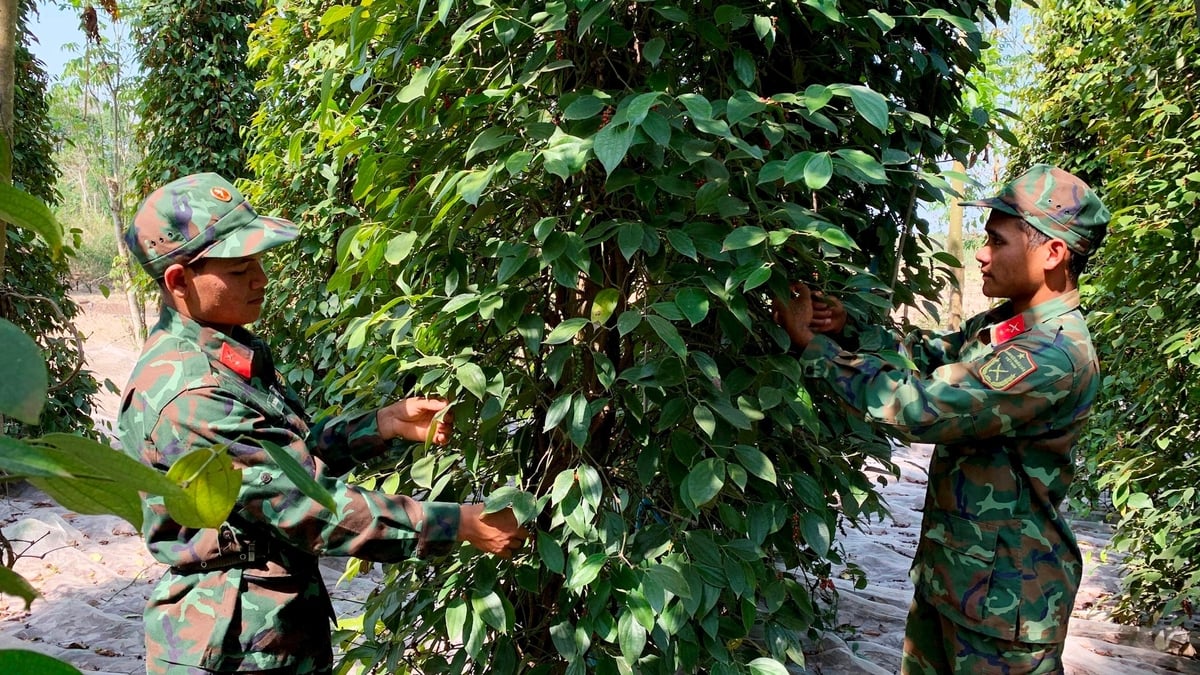

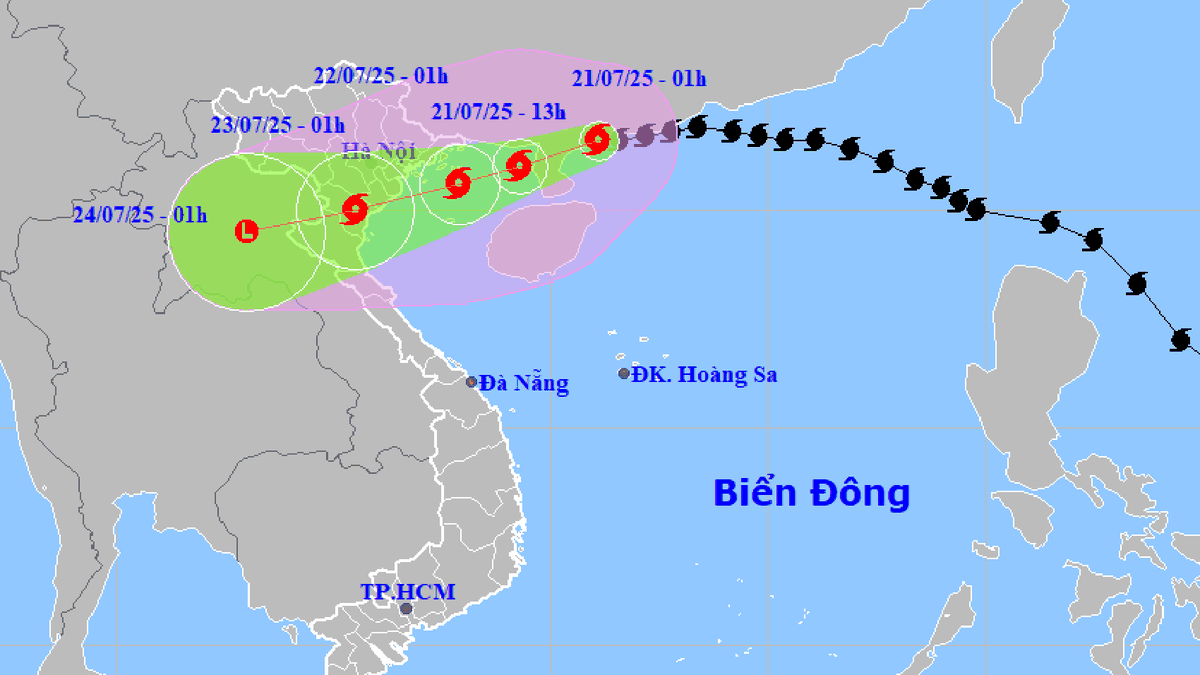
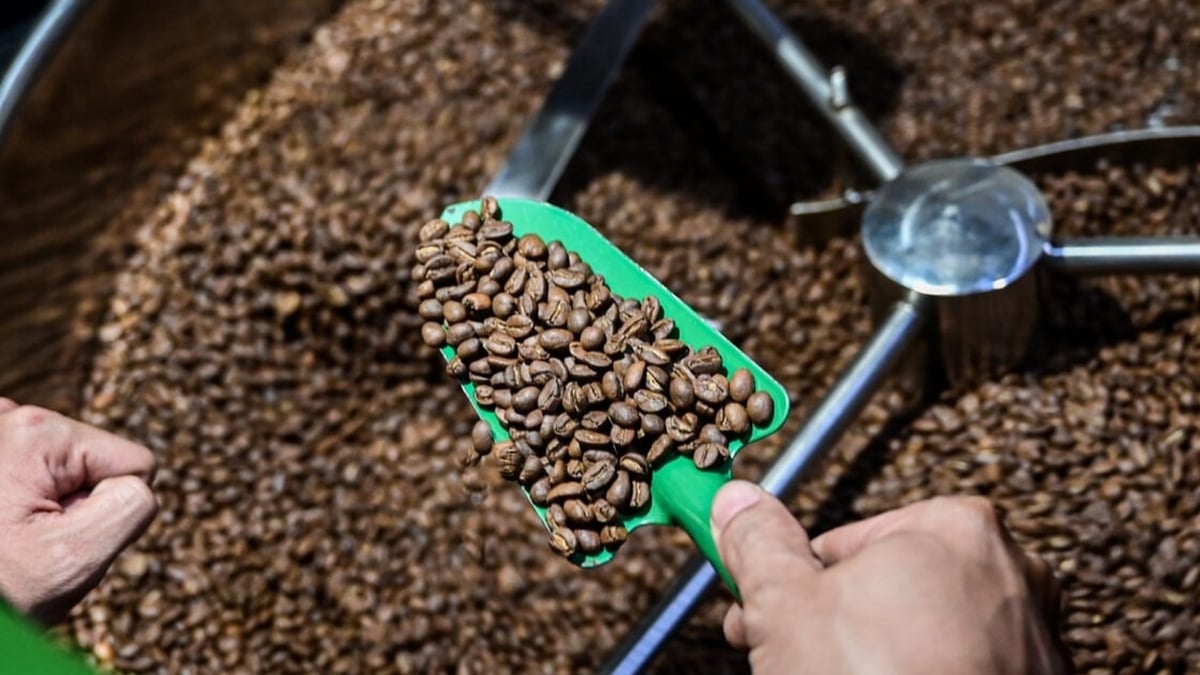

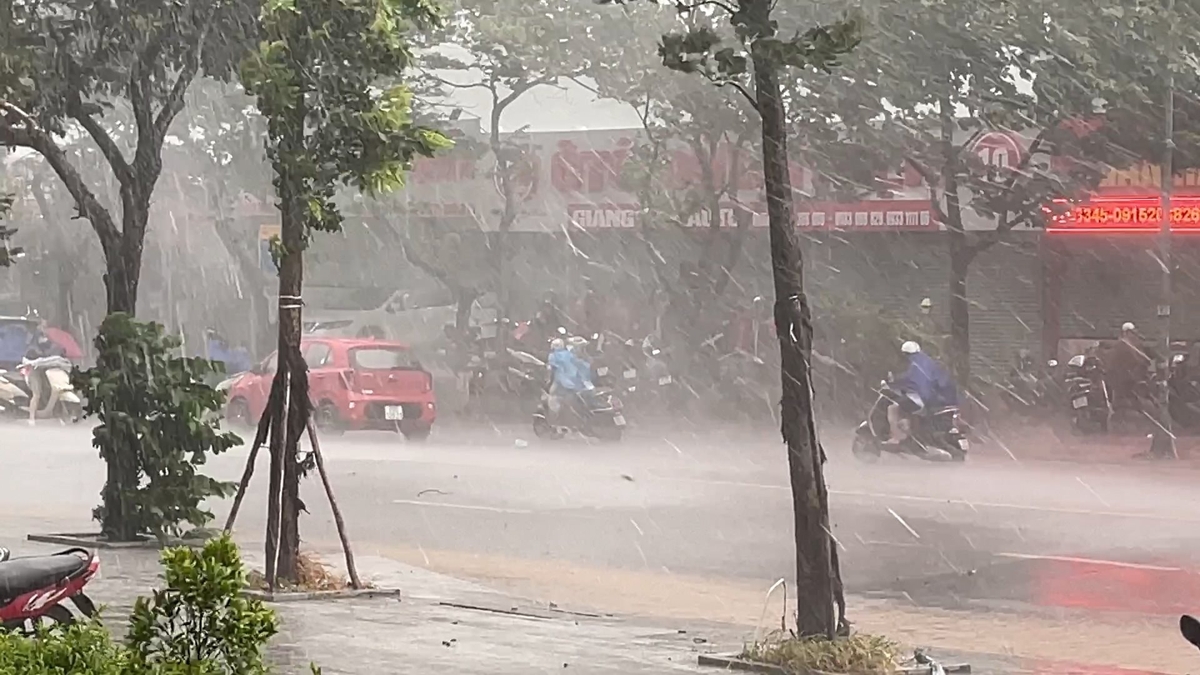
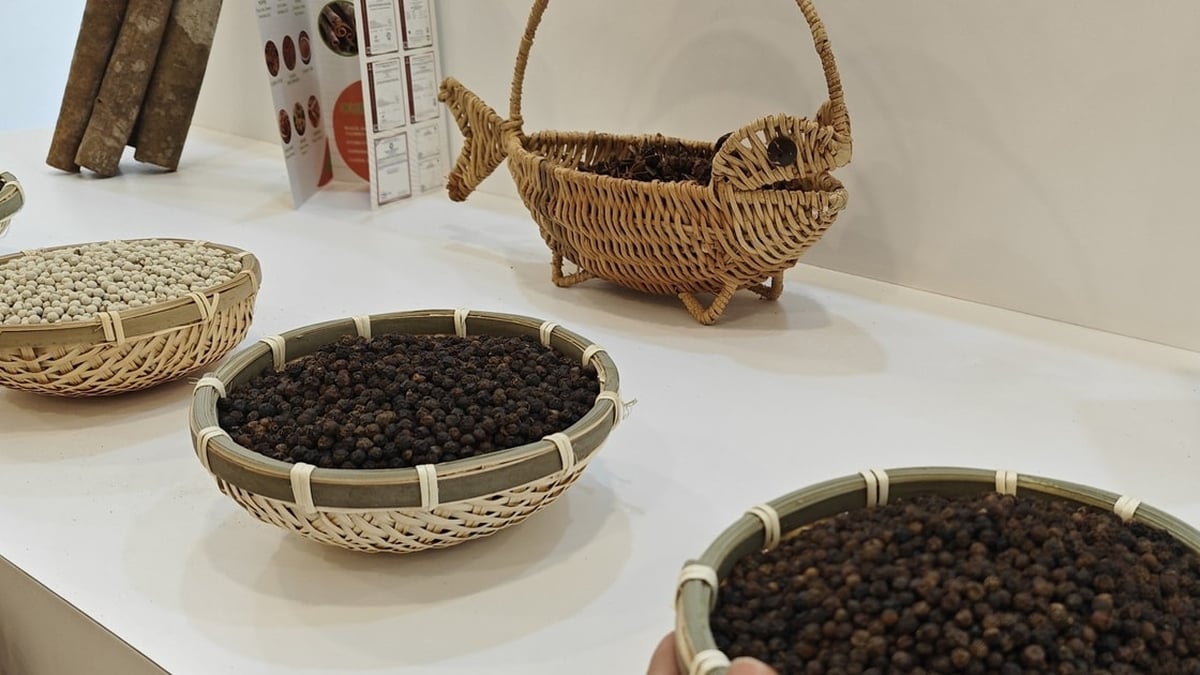
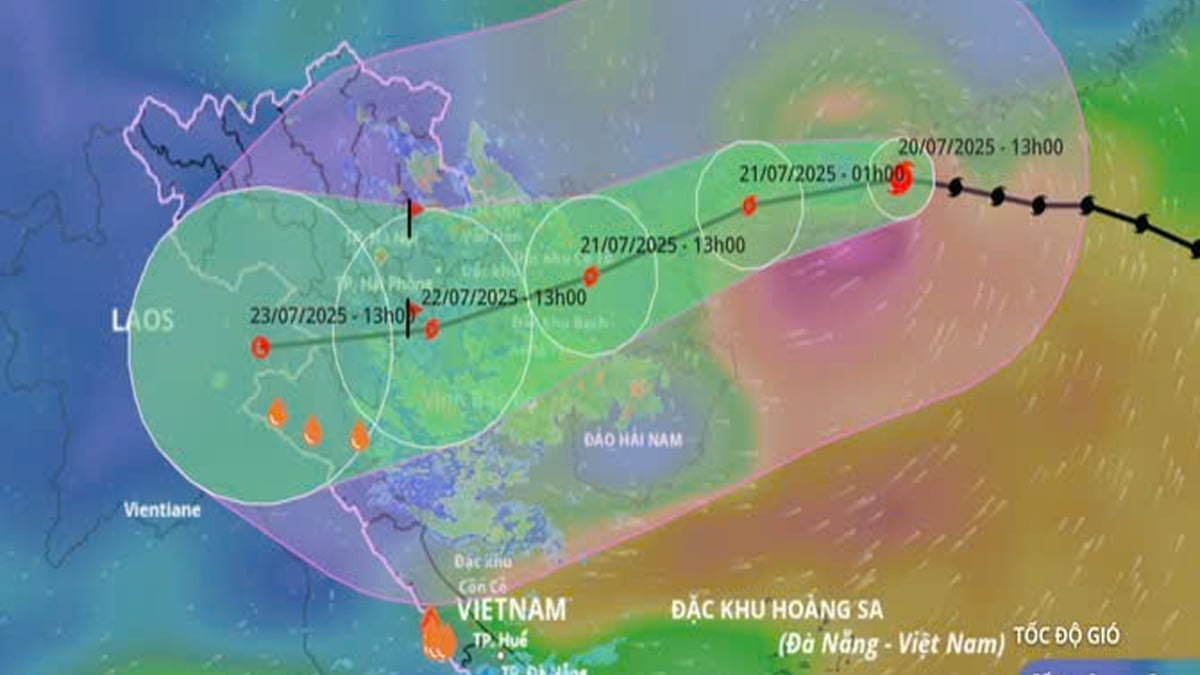


















![[Photo] National Assembly Chairman Tran Thanh Man visits Vietnamese Heroic Mother Ta Thi Tran](https://vphoto.vietnam.vn/thumb/1200x675/vietnam/resource/IMAGE/2025/7/20/765c0bd057dd44ad83ab89fe0255b783)


































































Comment (0)